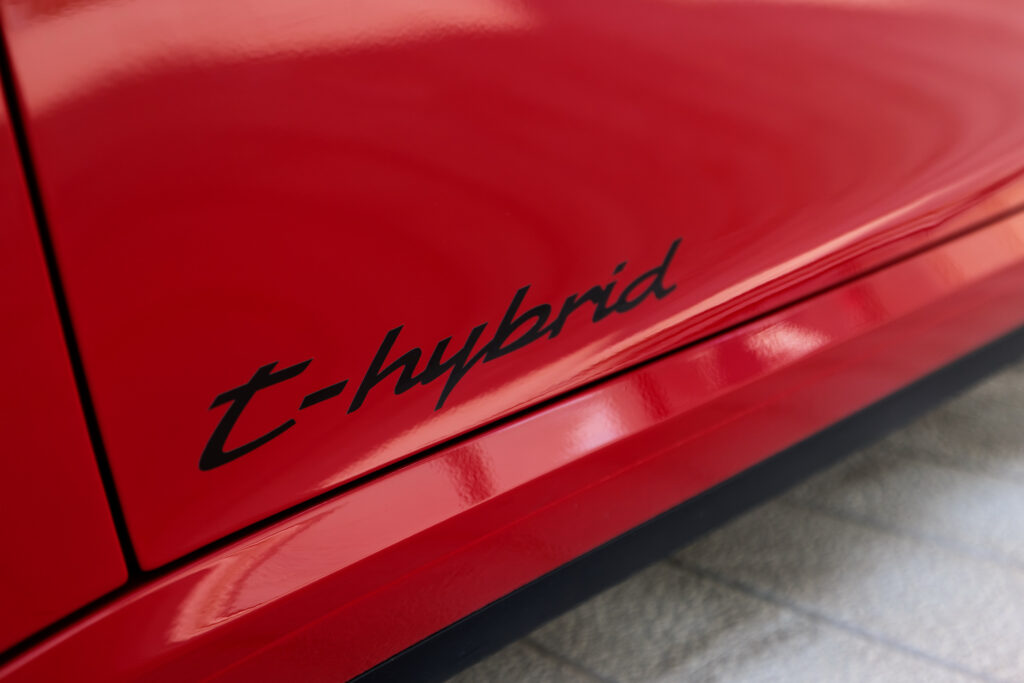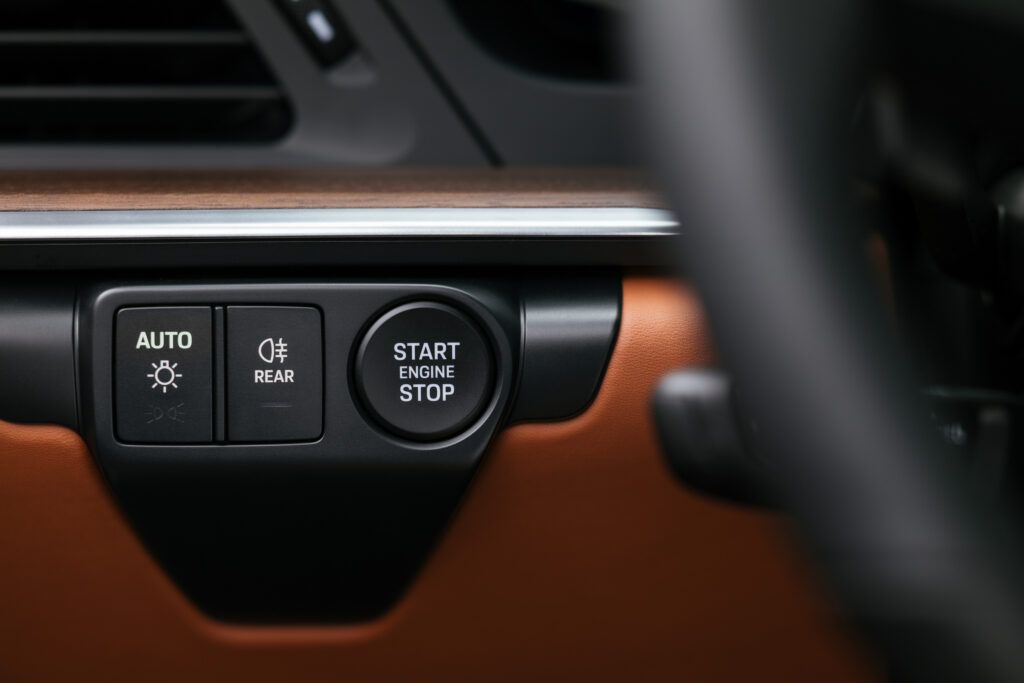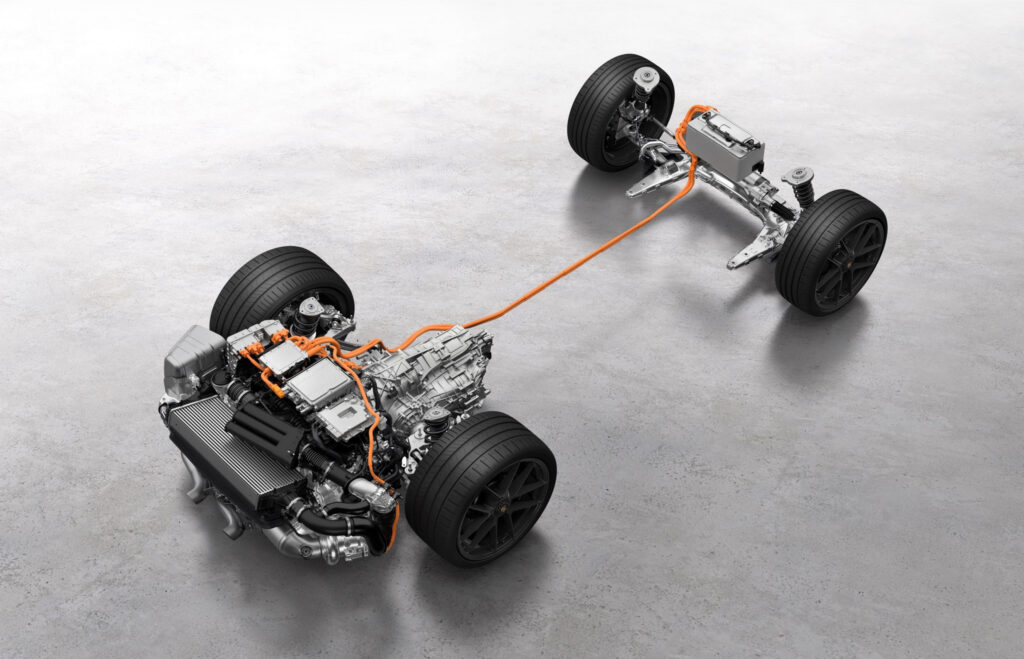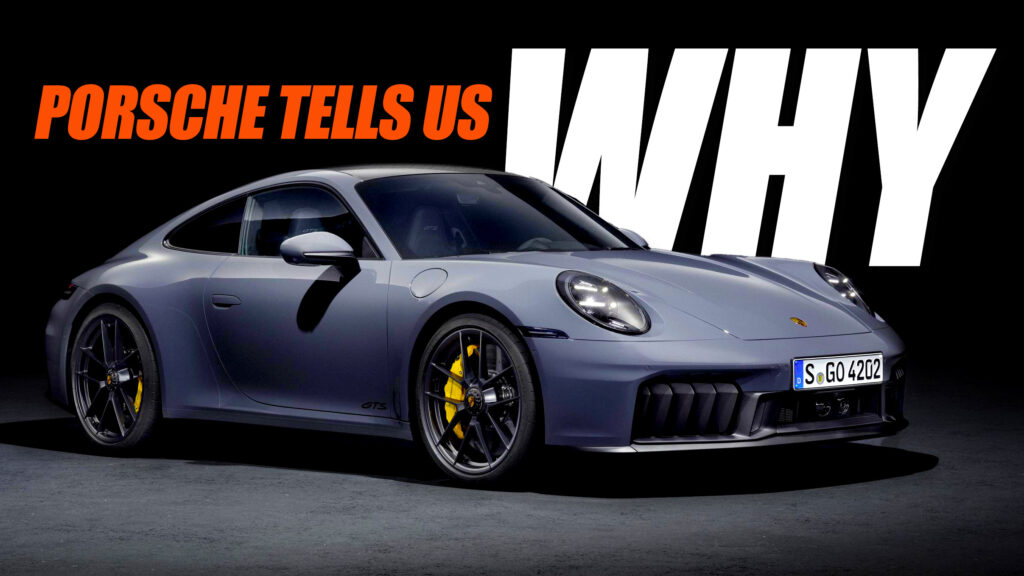- Porsche explained why it needed to introduce a hybrid 911 in response to upcoming emissions requirements.
- The 992.2’s move towards a starter button has been made for “familiarity and consistency between different models.”
- 911 Turbo and Turbo S, and 911 GT3 RS models remain technically unchanged for MY 2025.
By now, you would have already soaked up the latest Porsche 911 GTS T-Hybrid. It’s perhaps the most significant update to the model line since the company ditched air-cooled for water.
Naturally, with such a big transition and many more niggling queries on the new 992.2 generation, we still had a few burning questions that needed answers. Thankfully, Porsche was happy to oblige when we chatted with them about the latest and greatest addition to the 911 family.
Hybrid Dreams
In case you didn’t know, the 2025 Porsche 911 GTS T-Hybrid is the headliner of the facelifted 992.2-code of 911s. It swaps a 3.0-liter twin-turbo flat-six for a new 3.6-liter single-turbo unit with hybrid assistance. Power gains over the outgoing car are negligible, with 478 hp (485 PS) and 420 lb-ft (570 Nm) torque.
However, the change to a hybrid configuration is far more than just on-paper numbers, with the new chassis reducing the 0–60 mph (0–96 km/h) time from 3.2 seconds to 2.9 seconds. Plus, with a virtually lag-free experience (thanks to a turbo that can be spun electrically), the driving experience is guaranteed to be markedly different.
Read: 2025 Porsche 911 GTS Hybrid Has 532 HP And A Starter Button, But No Manual
But while this is all very impressive, you may be asking why the GTS has gone to hybrid power. Quicker acceleration times aside, a lot more complexity has been introduced for a model that still sits below the Turbo in terms of outright performance.
Why Did Porsche Opt For A Hybrid?

Speaking to Carscoops, Porsche’s U.S. spokesperson, Frank Wiesmann, told us that the introduction of the T-Hybrid system is, in part, a response to incoming legislation for new cars.
“The main goals of the T-hybrid system were meeting future emissions standards while further improving engine response and performance and also keeping the weight of the 911 in a range similar to the existing car to preserve the agility, balance and feel,” Wiesmann explained.
The delicate balance between keeping emissions in check and ensuring that weight is kept to the minimum is one reason why the 2025 Porsche 911 GTS doesn’t offer a zero-emission “EV-drive” mode. It’s also why the GTS has been kept as a self-charging hybrid, omitting the need for heavy plug-in hybrid hardware.
“Compared to the conventional plug-in hybrid systems, the performance hybrid of the new GTS models has a very compact and significantly lighter 400 V lithium-ion battery,” said Wiesmann. “The energy it provides is mainly used to increase performance with the integrated electric motor in the PDK and the eTurbo. A K0 clutch was not integrated to further optimize the weight.”
“This means that emission-free, all-electric driving is not possible. For this reason, additional hardware for external charging is deliberately omitted, contributing to the low overall weight typical of a sports car,” Wiesmann explained.
Porsche wouldn’t elaborate on whether they expected the new 911 GT to get better MPG figures from the EPA, but they did highlight how the new system can optimize efficiency. As with virtually every hybrid out there, the 911 GTS uses regenerative braking to top up its battery. However, it can also use excess exhaust energy during acceleration to either charge the 400 V lithium-ion battery or support the power of the integrated electric motor in the PDK with the help of the eTurbo.
Bye Bye Twist Key To Start

While we believe most 911 fans will understand the need to keep the model alive in the face of tightening emissions restrictions, which necessitate the introduction of hybrid power, we’re not sure the most die-hard 911 zealots will respond to the twistable simulated key being dumped for a less characterful starter button.
Why Did Porsche Switch To A Start Button?
What drove this change? According to Wiesmann, with the Taycan and Cayenne moving towards the starter button, the same was implemented in the new 911 to maintain some form of familiarity:
“The starter button is an integral part of the new Porsche Driver Experience cockpit layout, which has also been previously introduced on other new models such as the latest Panamera and Cayenne variants,” said Wiesmann. “For many of our customers who own several of our vehicles, familiarity and consistency between different models is important, so the layout is similar.”
No Changes To The 2025 Porsche 911 Turbo, GT3 RS
The good news is that the 911 Turbo and Turbo S, and 911 GT3 RS models will remain unchanged for 2025, although the regular 911 GT3 has now ended production. Meanwhile, Wiesmann told us that if you want a manual gearbox, you’ll have to sit the 2025 model year out, as all ’25 911s come exclusively with a PDK gearbox.
“All new 911 variants available to order for the 2025 model year will come standard and are exclusively available with PDK – on the GTS, this is due to compatibility with the electric motor within the PDK. With the exception of the 911 GTS models, this offer structure represents no change to model year 2024.”
Will We See A Carrera S Anytime Soon?
“We’re excited to launch the updated version of the 911 Carrera, as well as the new 911 Carrera GTS models with the T-hybrid powertrain.,” says Wiesmann. “Of course, one of the many strengths of the 911 model line has always been variety. We will communicate on potential further variants at the appropriate time.”
Most 911 Coupes Now Come Standard With Two Seats
One final detail that caught our attention is that the 2025MY 992.2 Carrera and Carrera GTS coupe models now come standard with two seats. However, Porsche offers the back seats (2+2) at no extra cost for those who prefer a more practical layout.
Convertibles (Carrera Cabriolet, Carrera GTS Cabriolet, and Targa GTS) and all Turbo models prioritize practicality with four seats as standard. However, the 911 Turbo offers a Lightweight Package with racing seats, sacrificing the rear seats for a pure two-seater experience. Similarly, the high-performance 911 GT3 RS remains a dedicated two-seater.





